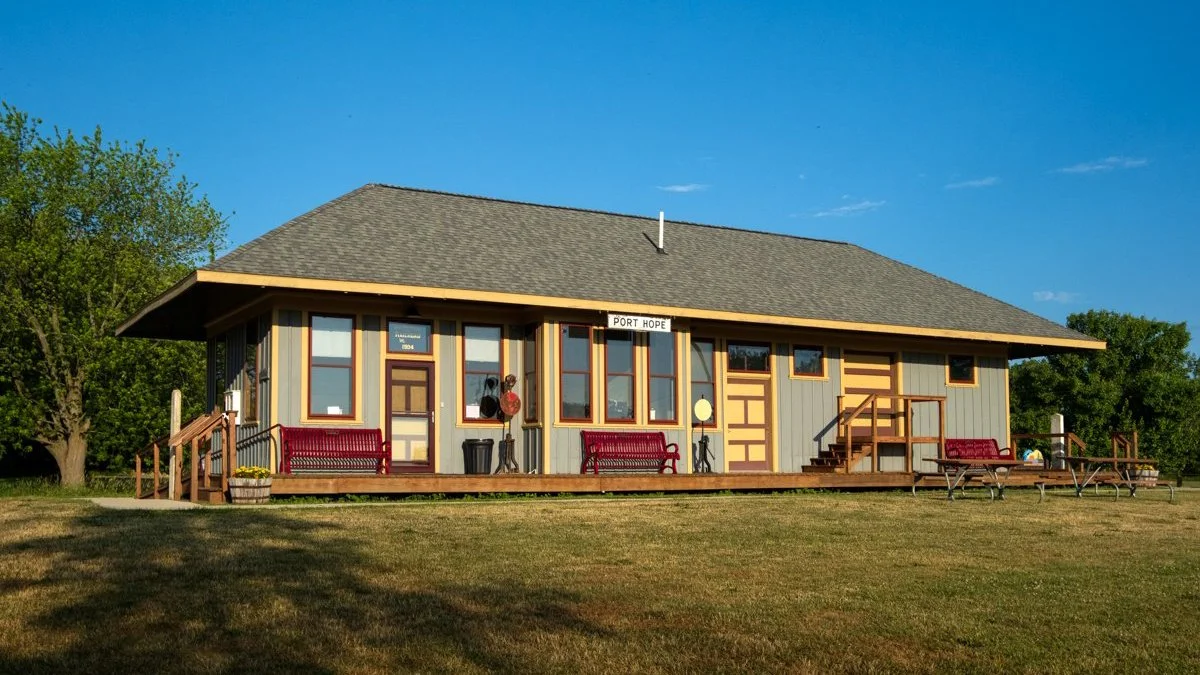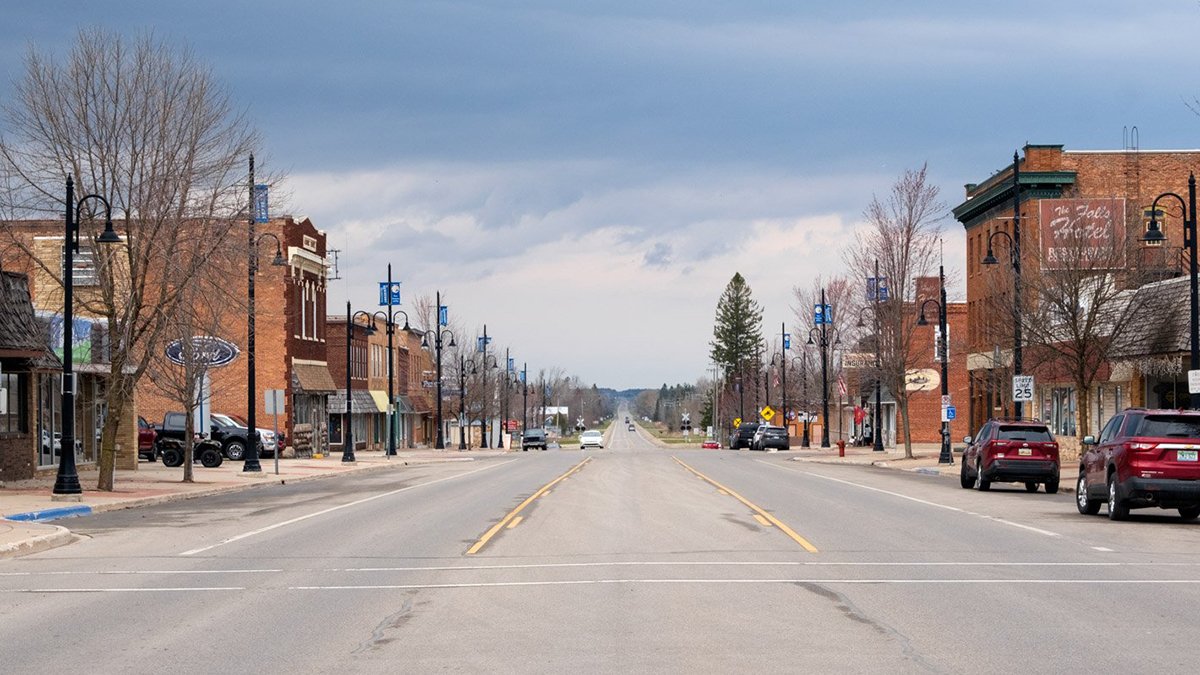Towns in Michigan
During the pandemic, we started diving into the towns we’d visit while camping. We knew that Michigan had a ton of history; however, it was hard to fathom how deep some of these towns’ backgrounds go and how interesting it would be to visit places we better understand.
We’ve found that most Michigan towns have ties to the mining or forestry industry. Many of the tourist towns we know today were settled by lumber barons to create a place for their workers to live and raise families, and some of the Upper Peninsula’s most iconic places were one-time company towns.
As the lumbering industry died down after most of Michigan was clear-cut and the mines ran dry or became unprofitable thanks to cheaper-run operations elsewhere, many of these towns fell on hard times or leaned into tourism. Despite that, our favorite places in Michigan retain their historic characteristics.
There are a few towns and cities that we’ve done deep dives on; those are in the favorites section. The other listings have valuable information but aren’t as in-depth historically.
Our Favorite Towns in Michigan
Port Hope
Port Hope was originally a lumber town. Most of the thumb was; however, Port Hope was one of the industry’s epicenters in Michigan’s Thumb. In the 1850s, William R. Stafford purchased land here for that purpose, and his influence on the town was greater than that of any other person.
One of the most unique things about Port Hope is how many historic structures are still here and how many are listed on the National Register of Historic Places. There are still buildings here that pre-date the great fires of 1871 and 1881, which isn’t common for most places in the thumb, which was ravaged on both occasions.
Today, Port Hope is a small village with less than 300 full-time residents. Stafford County Park is the town’s crown jewel, but numerous restaurants and shops are worth stopping in town for, including Buck’s Diner, Port Hope Mercantile (owned by relatives of William R. Stafford), and Port Hope Antiques.
Big Bay
Big Bay has a unique history that includes some big names and a Hollywood movie. Initially settled by the white man in the mid-1800s, the town grew into a small lumbering community. In the early 1900s, Brunswick built a sawmill in Big Bay to manufacture bowling pins from hard maple trees. Brunswick ceased operations there in the early 1930s.
Shortly after closing the mill, Brunswick gave Powell Township a plot of land on Lake Independence for $1. This would initially be called Big Bay Tourist Park but later be renamed Perkins Park after Supervisor Perkins.
In the 1940s, Henry Ford purchased multiple parcels in Big Bay, including the mill. Most of the property was sold after Henry Ford died in 1947.
In 1952, a murder occurred at the Lumberjack Tavern, and a movie called Anatomy of a Murder, starring James Stewart, was written and filmed about the events. The bar is still there and is a popular spot for locals and tourists alike.
Today, Big Bay is an unincorporated community with under 600 people. It’s a popular spot for campers, waterfall-seekers, and 1950s crime/thriller movie fans.
Calumet
There are a lot of unique former mining towns in Michigan’s Keweenaw Peninsula; however, we don’t think that there’s another as special as Calumet. The United States Government took these lands from the Native Americans in an 1842 treaty, and commercial copper mining began soon after that. Calumet, originally called Red Jacket, became a city in 1875.
The Calumet & Hecla Mining Company was located nearby, but there were multiple mining operations in the area, causing the population to swoon to over 2,000 people in 1880. Census population data was likely lower than the actual data because many miners lived in cramped boarding houses and often didn’t speak English.
The mining industry didn’t disappear overnight, but it soon became less profitable, causing most operations to close up shop. Despite having less than 2,000 residents for roughly a century, the village has retained much of its architectural history, making it one of the most unique towns in Michigan. The Calumet Theatre, Mineral Range Depot, Calumet Colosseum, and numerous other historic structures are evidence of that.
We haven’t been to many places that look and feel like Calumet. It’s a real treasure, and in addition to offering history, there are numerous restaurants and shops to visit and dozens of waterfalls, rock beaches, and hiking trails to explore within a short drive of the village.
Newberry
Like many of Michigan’s small towns up north, Newberry started as a lumbering town. Its proximity to the rail line made it an ideal candidate to become one of the larger communities in Luce County, and it did. It’s named after John Stoughton Newberry, a notable figure who resided here for some time.
In addition to becoming a lumbering town, Newberry was the longtime home of the Upper Peninsula Hospital for the Insane. It would later be renamed the Newberry State Hospital and later the Newberry Psychiatric Hospital, closing its doors in 1995. After that, it became a prison; however, many former hospital structures remain intact, unused, and off-limits.
McMillan Township, where Newberry is located, is Michigan’s largest. Newberry is Luce County’s only incorporated village; the rest are unincorporated communities or census-designated places. Because of this, Newberry is the epicenter of life for miles. There are restaurants, a Ford dealership, a large school, numerous historic buildings, and the Tahqua-Land Theatre in town.
For many, Newberry is a jumping-off point for adventures in and around the Eastern Upper Peninsula. Its proximity to Muskallonge Lake is ideal for rock hunting and camping, and it’s close to Tahquamenon Falls, too.
Other Great Towns
Harbor Beach
Like most of the thumb, Harbor Beach’s history is tied to the lumbering industry. There was a town near here called Barnettsville in the 1850s, which eventually became Sand Beach. In 1899, it became Harbor Beach, named after the largest manufactured freshwater harbor in the world. Harbor Beach is one of the larger towns on the shores of Lake Huron in Michigan’s Thumb and is a popular summer vacation destination. There are restaurants, shops, and outdoor activities to explore nearby.
Ludington
Ludington has humble beginnings as a lumbering and farming town. However, after the forestry business died down, Ludington established itself as the region’s largest community on Lake Michigan, offering good schools, excellent vacation amenities, stellar access to the water, and the unique opportunity to travel to Wisconsin by boat. Ludington State Park (home to Big Sable Point Lighthouse) is nearby, and there are plenty of places to enjoy the big lake. The SS Badger, which launched in 1952 and is the last remaining coal-operated passenger shop on the Great Lakes, runs to and from Manitowoc, Wisconsin, from May through October.
Rogers City
Rogers City doesn’t always ring a bell for Michiganders, even if they’ve lived here their entire lives. It’s a sleepy community on the rugged shores of Lake Huron that isn’t the most popular travel destination; however, it probably should be. Rogers City lies within close proximity to numerous rock beaches, the Lower Peninsula’s only named waterfall, and the Mackinac Bridge. There are family-run restaurants, small shops, and a theatre that dates back to the 1930s.
Caseville
Caseville might be known for Cheeseburgers, but it’s a lot more than that (the burgers are delicious, though). Known by most as a summer tourist town, Caseville has had numerous names over the years, taking its current name in the 1850s. Initially a logging town, Caseville soon became a tourist destination thanks to its proximity to cities like Bay City, Saginaw, Flint, and Detroit. Caseville County Park is a popular place for beachgoers and campers, and numerous other communities nearby have year-round amenities to offer.
Pentwater
Much of Oceana and Mason Counties have one man to thank for their initial prosperity: Charles Mears. His lumbering operations and sawmills are why many towns exist, and he built numerous channels from inland lakes out to Lake Michigan to transport his timber. Pentwater is one of those towns, and thanks to the channel, it grew to manufacture bricks, furniture, and other goods. Charles Mears’ family donated land on Lake Michigan to create a Mears State Park in 1920, and Pentwater has mostly been a vacation town since then. Numerous restaurants, shops, hikes, and recreational activities are nearby, making this a great jumping-off point for your adventures on the west side of the state.
Is there a town that you think we should document in-depth? Drop us a line here to let us know!





